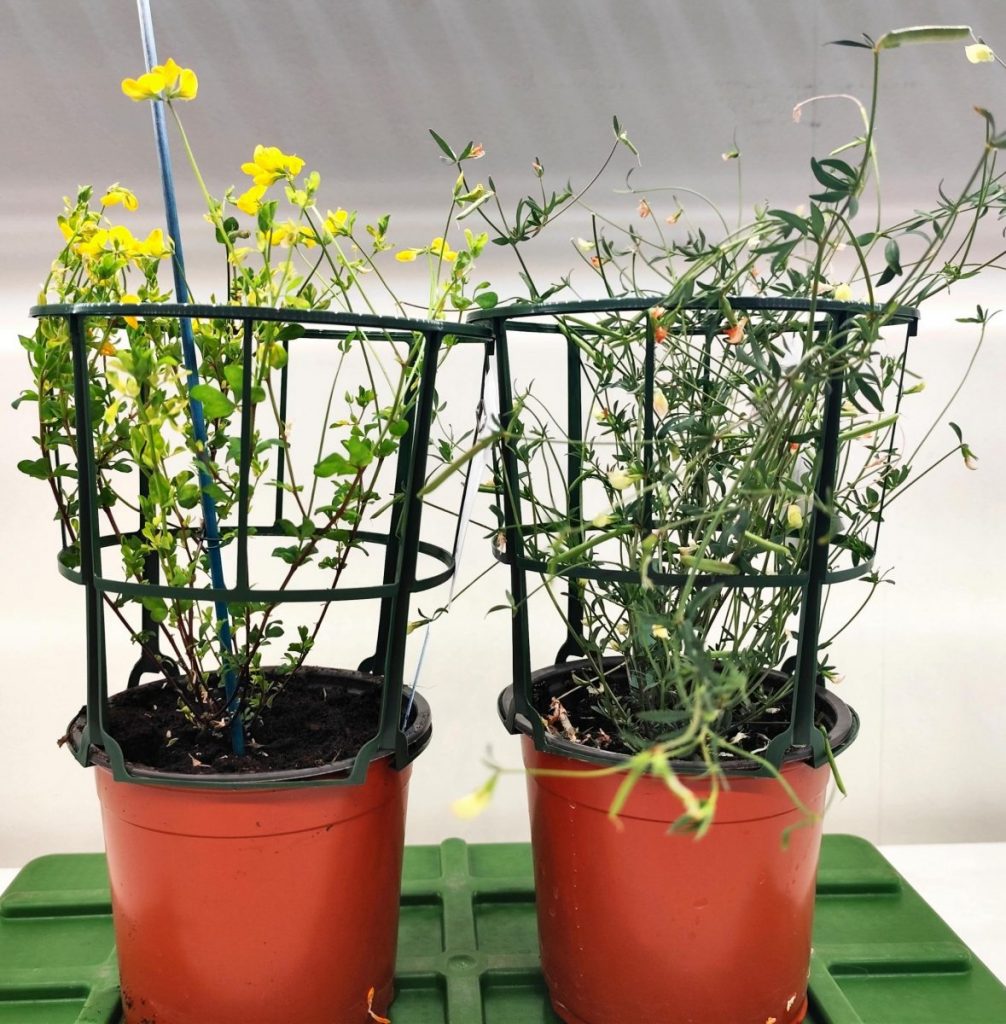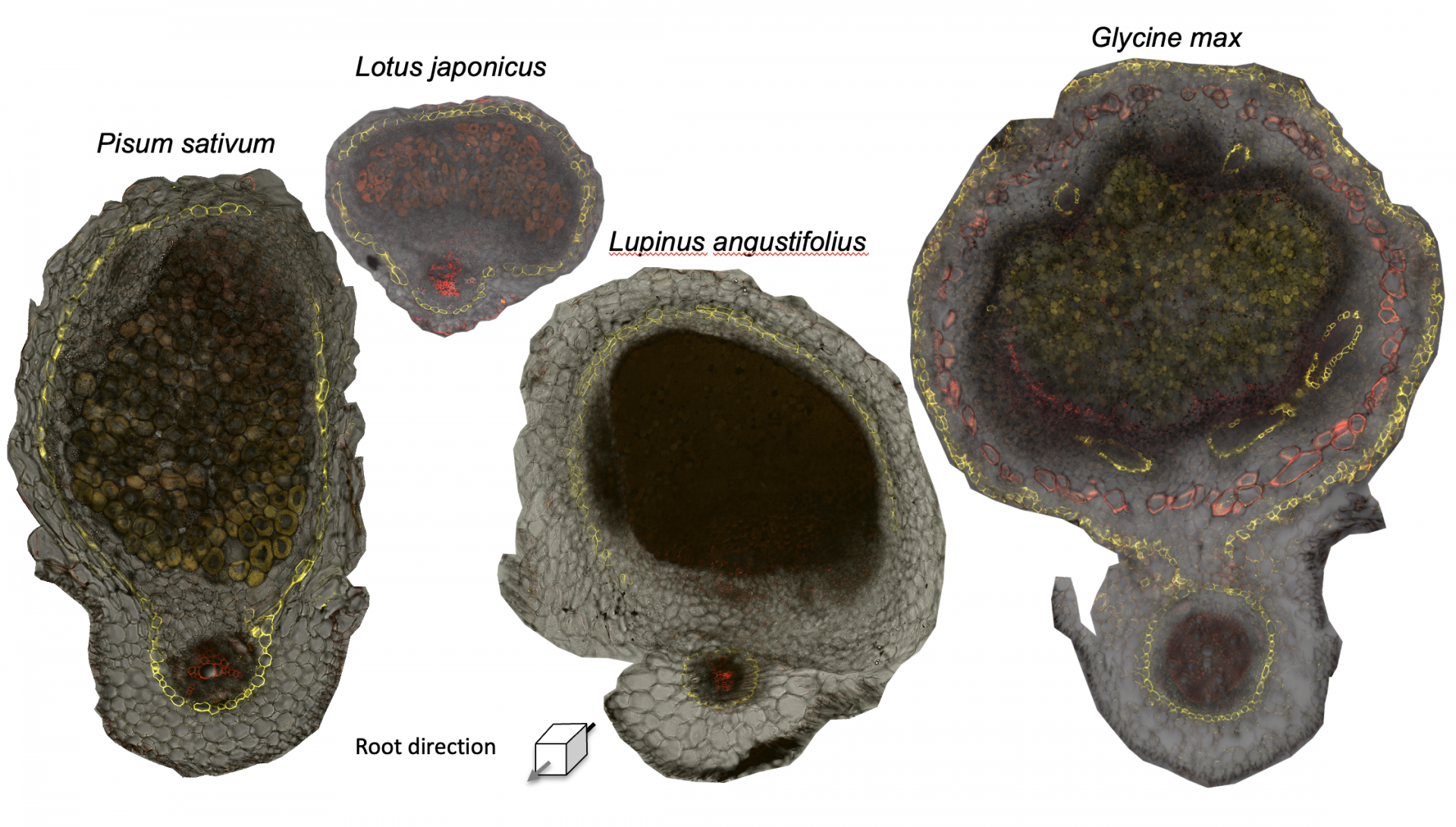Legumes host rhizobia inside cells of specialised root organs called nodules. Nodules provide nutrition and protection for the rhizobia in exchange for fixed nitrogen. Besides symbiotic rhizobia, commensals and even parasitic bacteria can also colonize these organs, influencing their function. Our team investigates how legumes accommodate different types of bacteria inside these organs and aims to identify key nodule features enabling symbiosis and nitrogen fixation.

We get inspired by the natural diversity of symbiotic interactions to determine the genetic basis of different symbiotic processes. Our favourite legumes are Lotus japonicus and Lotus burttii, but we also work with tastier alternatives like soybean, pea, and lupin.
Nodule diffusion barrier
To protect the bacteria’s delicate nitrogen-fixing machinery from oxygen, the plants make special adaptations to control oxygen levels in the nodules. By comparing the transcriptomes of nodules that were infected with bacteria to those that were not. We discovered that certain genes, especially those involved in modifying cell walls with lipid polyesters, were more active in infected nodules. One particular set of genes, called Fatty acyl-CoA Reductase genes, were crucial. When we phenotyped mutant plants lacking one of these genes, which is specifically expressed in the nodule’s protective outer layer, the nodules became more permeable. This led to higher oxygen levels inside the nodules, reducing the bacteria’s ability to fix nitrogen and stunting the plant’s growth. Providing the first clear genetic evidence of how legume plants create these oxygen barriers in their nodules.

Currently we are investigating what other roles this diffusion barrier play in nodule functioning, its conservation, and how its formation and degradation is regulated by biotic and abiotic cues.
Nodule microbiota
Nodules also contain other types of bacteria that are not rhizobia. While some of these other bacteria can promote plant growth, it’s unclear how they affect the relationship between the plant and the rhizobia. We investigated this by looking at the bacterial communities inside the nodules of healthy and starved Lotus plants. Our study found that the mix of bacteria inside the nodules varied depending on the type of bacteria in the soil. For all tested Lotus species, this bacterial community changed based on the soil they grew in, but only in Lotus burttii did it also change based on the plant’s health. We discovered that certain types of bacteria, specifically Pseudomonas species, were commonly found in the healthy nodules of Lotus burttii and had a negative relationship with rhizobia. A particular strain of Pseudomonas was able to coexist with a beneficial type of rhizobia but not with a less effective one. Our findings show that the other bacteria living inside the nodules can influence how well the plant and rhizobia work together, but this effect depends on the specific plant species.
